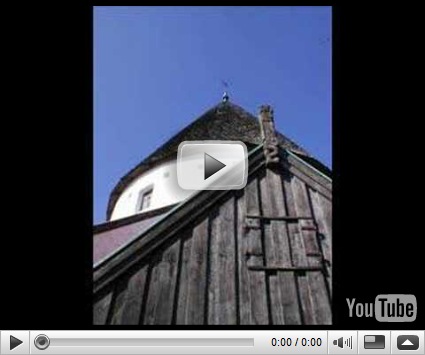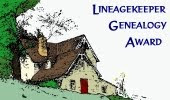One branch of my ancestry lived on Bornholm Island in the Baltic Sea for hundreds of years. The island is located east of Denmark, north of Poland and South of Sweden, covers 227 square miles and the language is a dialect of Danish called “bornhlmsk”.
Because of the small land size and remote location, residents tended to live there for many generations. Churches are called Kirke’s and on Bornholm, the design and styles are truly unique. They are well kept and I’m lucky because there are so many great Danish census and church records documenting the residents there over the past 400 years.
Of course those of us not living where patronymics were used in naming convention may struggle a little in tracing lineages.
It isn’t too difficult understanding the principle when Lars Jensen is the son of Jens Andersen who was the son of Anders Hansen. The first name of the father becomes the surname of the child. Just add ‘sen’ for the men and ‘datter’ for the ladies. It’s simple right?
Well, not always. Sometimes a location was tacked on to the name as well. An example is Hans Hansen Riis. Of course, there are many other variations in naming that existed there too, but after a few days of research, you’ll generally get the ‘drift’ of how it all worked.
Unfortunately, there weren’t too many unique first names used on the island … Hans, Jorgen, Jens, Anders, Peder, Bendt, Lars, Esper, etc. So how do you track your family when there are a ton of men with common names and you aren’t sure which one is yours?
Research takes some thoughtful reasoning. Surnames are only a clue to the father’s name. They don’t continue down through the family unless you are lucky and descend through Hans the son of Hans who was also the son of Hans and hence end up with three Hansen’s in a row. Of course that really isn’t that much help since there are a lot of unrelated Hansen’s in the area. Remember how common the first name ‘Hans’ is….. Hopefully, your ancestor had a middle name too, which narrows down the number of possibilities.
I’m sure that there is a very good method to trace patronymic lineages. I’ve read a lot of instruction books on the subject but have found that for me personally, the best way to find my ancestors is to inventory all the church and census records in the area, compare birth years and locations and then narrow down the probable candidates to a list of names, places and dates. By adding the known birth date of a child and you now have two points of reference in addition to the birth location of the child.
To the readers, if you have great hints, tips and instructions about researching ancestors who used patronymics as a naming convention, leave a note and links on this post so we can all benefit from your knowledge.
I rely on touring the ancestral locations and look for probable migratory patterns. I’ve described using Google Earth as a research tool in other postings. It is my constant companion when I’m doing research farther back in time. I plot the results of ‘probable’ or ‘possibles’ individuals and locations, save the file and add the known locations.
The visual representation helps in the quest. Granted, folks may have moved long distances back then, but usually the ‘distance movers’ are few in numbers. Most folks stayed in a fairly small radius on a map. You just need the town and parish names so you can start your search.
During the evenings this week, I’ve toured all the churches, graveyards and farmlands where my ancestors lived on Bornholm using Google Earth. Thanks to other users who have posted photos of the locations and have attached them to the database, I’ve had a grand time. Although the smells and ambiance were missing, my imagination filled in a lot of the blanks. I can still smell the fish smoke houses when I think about them.
If you’d like to take a quick tour of the churches that served my ancestors using Google Earth, click here. Once the program launches, just click on Tools > Play Tour. (Yes, I’m assuming you already have the free Google Earth program installed on your computer).
Have you created files of the birth, marriage, death and burial locations of your family yet? If not, go for it. It is easy and you’ll quickly find out how useful this tool is in your research and ancestral remembrance.
If you’d like a quick photo tour of the beautiful and unique Bornholm island and its buildings, play the video below.










1 comments:
Drew,
Your description of the churches of Bornholm is very much appreciated. My paternal ancestry descends from Bornholm. I liked the extra effort on the Google Earth kml that you shared in the blog. Seeing the area in a map with annotations is more isighful than just the narrative.
Thanks
Robert Peel (Pihl)
Idaho Falls, Idaho
Post a Comment